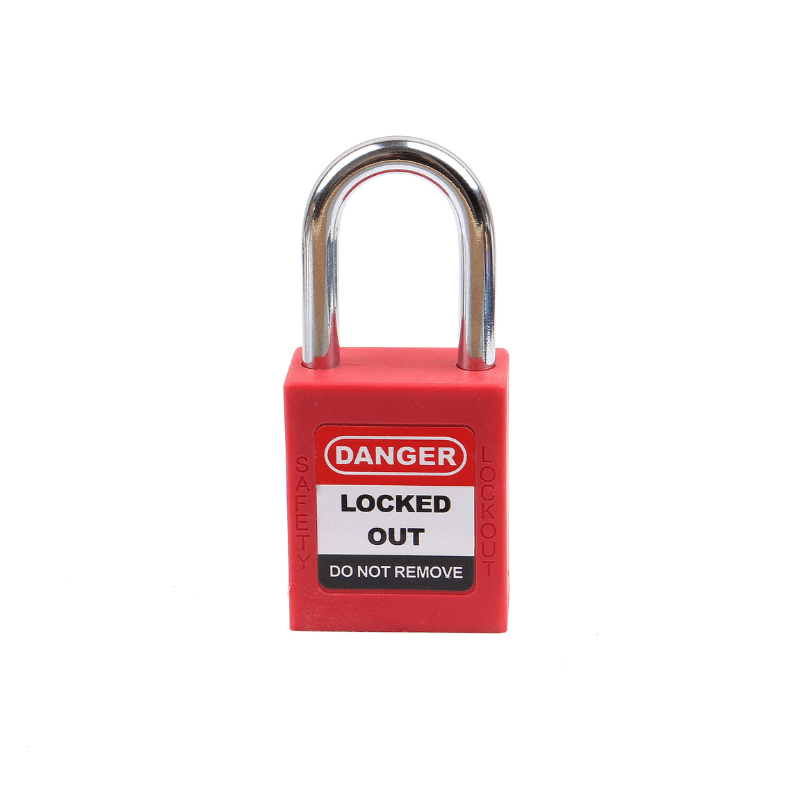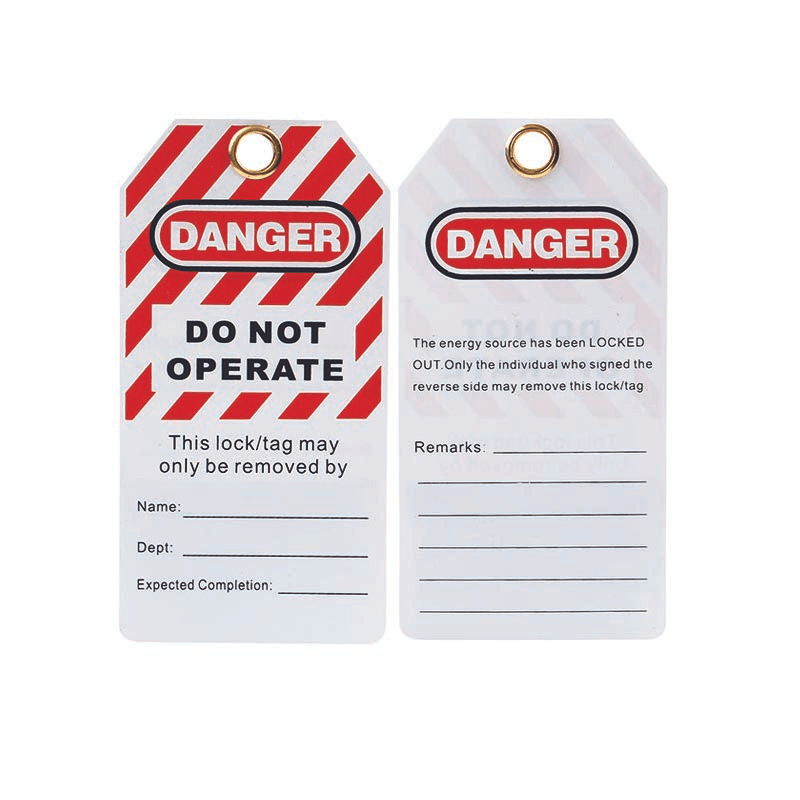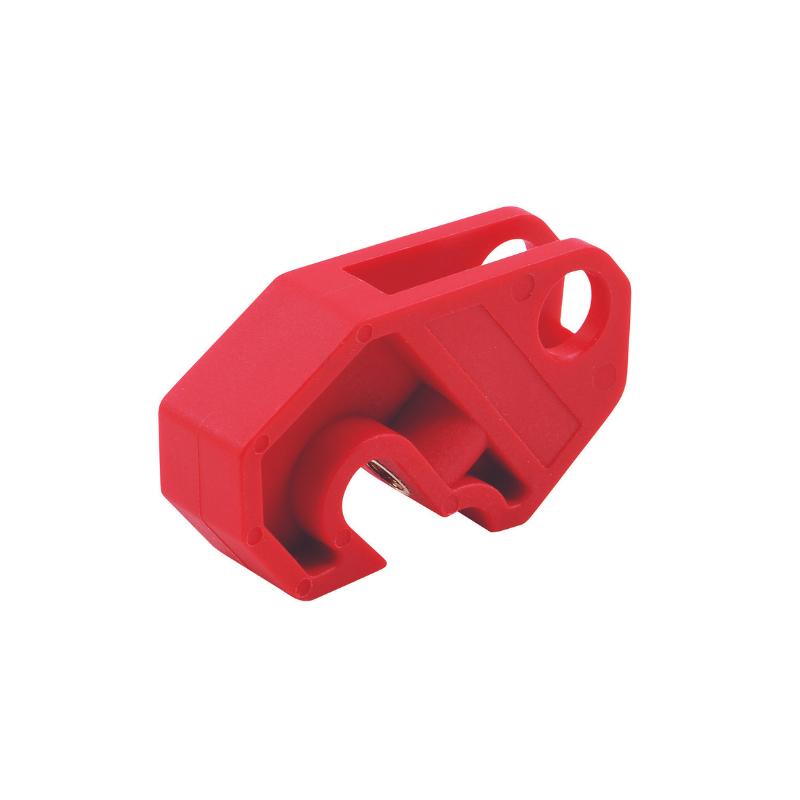In any workplace where hazardous substances are handled, the risk of accidental exposure is a serious concern. Immediate decontamination can be the critical factor in preventing severe injury. This guide provides clear insights into the Occupational Safety and Health Administration (OSHA) and American National Standards Institute (ANSI) standards governing safety showers and eyewash stations, ensuring you are equipped to protect your workforce effectively.
Table of Contents
- What are Safety Showers and Why are They Critical?
- Understanding OSHA's Role in Safety Shower Regulations
- ANSI/ISEA Z358.1: The Key Standard for Emergency Eyewash and Shower Equipment
- Differences and Relationship between OSHA and ANSI Standards
- Importance of Compliance for European Workplaces
- Selecting the Right Safety Shower for Your Needs
- The Lock Box's Commitment to Workplace Safety
- Conclusion: Prioritizing Safety with Proper Equipment and Knowledge
What are Safety Showers and Why are They Critical?
Safety showers and eyewash stations are essential emergency response tools designed to drench or flush a user's body and eyes if they come into contact with hazardous chemicals or materials. Accidental splashes, spills, or exposures to corrosive substances, flammable liquids, or even fine particulates can cause severe burns, tissue damage, or blindness. The first 10 to 15 seconds after exposure are critical. Immediate use of a correctly specified and functioning safety shower or eyewash station can significantly mitigate the severity of an injury, prevent long-term health effects, and in some cases, save lives.
These units are not just advisable; they are often mandated by safety regulations in workplaces where employees may be exposed to injurious corrosive materials. Their presence underscores an employer's commitment to worker safety and preparedness for emergency situations. Understanding the standards that govern their installation, performance, and maintenance is crucial for any safety-conscious organization.

Understanding OSHA's Role in Safety Shower Regulations
The Occupational Safety and Health Administration (OSHA) is a United States federal agency responsible for ensuring safe and healthful working conditions for workers. While OSHA sets mandatory requirements, its approach to safety showers and eyewash stations is somewhat general, often referring to consensus standards like those from ANSI for specific guidance.
OSHA's General Duty Clause
Section 5(a)(1) of the Occupational Safety and Health Act, commonly known as the General Duty Clause, requires employers to provide their employees with a place of employment that "is free from recognized hazards that are causing or are likely to cause death or serious physical harm." Exposure to hazardous chemicals without adequate decontamination facilities would fall under this clause. If no specific OSHA standard applies to a particular hazard, the General Duty Clause may be cited.
Specific OSHA Standards Referencing Emergency Washing Facilities
The primary OSHA standard that directly addresses emergency washing facilities is 29 CFR 1910.151(c). This standard states:
"Where the eyes or body of any person may be exposed to injurious corrosive materials, suitable facilities for quick drenching or flushing of the eyes and body shall be provided within the work area for immediate emergency use."
OSHA does not, within this regulation, provide detailed specifications for what constitutes "suitable facilities." Instead, OSHA often refers to the ANSI/ISEA Z358.1 standard as a recognized source of guidance for compliance. Letters of interpretation issued by OSHA frequently clarify that equipment meeting the ANSI standard will generally be considered compliant with 29 CFR 1910.151(c).
Other specific OSHA standards for particular industries or substances may also require emergency washing facilities, such as those for:
- Permit-required confined spaces (29 CFR 1910.146)
- Hazardous waste operations and emergency response (HAZWOPER) (29 CFR 1910.120)
- Standards for specific chemicals like formaldehyde or anhydrous ammonia.
ANSI/ISEA Z358.1: The Key Standard for Emergency Eyewash and Shower Equipment
The American National Standards Institute (ANSI) is a private, non-profit organization that oversees the development of voluntary consensus standards for products, services, processes, systems, and personnel in the United States. The International Safety Equipment Association (ISEA) is an ANSI-accredited standards developing organization for personal protective and safety equipment.
The most significant standard for emergency showers and eyewashes is ANSI/ISEA Z358.1, titled "American National Standard for Emergency Eyewash and Shower Equipment." First published in 1981 and updated periodically (most recently in 2014, with a new revision anticipated), this standard provides comprehensive guidelines for the minimum performance, installation, use, maintenance, and training requirements for emergency eyewash and shower equipment.
Scope and Purpose of ANSI/ISEA Z358.1
The purpose of ANSI/ISEA Z358.1 is to provide uniform minimum requirements for emergency eyewash and shower equipment to ensure it performs as intended in an emergency. The standard covers various types of equipment, including:
- Plumbed and self-contained emergency showers
- Plumbed and self-contained emergency eyewash stations
- Eye/face wash units
- Combination shower and eyewash units
- Personal wash units (supplemental)
- Drench hoses (supplemental)
It details everything from the flow rates and water patterns to the temperature of the flushing fluid and the accessibility of the equipment.
Key Requirements for Safety Showers under ANSI/ISEA Z358.1
Compliance with ANSI/ISEA Z358.1 involves adhering to several critical performance and installation criteria for safety showers:
Location and Accessibility
- 10-Second Rule: Emergency showers must be located within a 10-second travel time (approximately 55 feet or 16.8 meters) from the potential hazard. The path of travel must be free of obstructions and on the same level as the hazard.
- High Visibility: The location of the safety shower must be well-lit and identified with a highly visible sign.
Water Flow Rate and Duration
- Flow Rate: Plumbed and self-contained emergency showers must deliver a minimum of 20 gallons per minute (GPM) (75.7 liters per minute) of flushing fluid.
- Duration: The shower must be capable of delivering this flow for a minimum of 15 minutes. This ensures that the casualty can be thoroughly decontaminated.
- Spray Pattern: The spray pattern must have a minimum diameter of 20 inches (50.8 cm) at 60 inches (152.4 cm) above the surface on which the user stands. The center of the spray pattern must be at least 16 inches (40.6 cm) from any obstruction.
Water Temperature
- Tepid Water: The standard mandates the delivery of tepid flushing fluid. "Tepid" is defined as a temperature range between 60°F (16°C) and 100°F (38°C).
- Importance of Temperature: Water that is too cold can cause hypothermia or discourage the user from staying under the shower for the required 15 minutes. Water that is too hot can scald the casualty or increase chemical absorption. Thermostatic mixing valves are often required to achieve and maintain this temperature range.
Activation
- Valve Operation: The shower valve must activate in one second or less and must stay open (hands-free operation) until intentionally closed.
- Actuator Handle: The actuator handle must be located no more than 69 inches (173.3 cm) from the level on which the user stands and must be easy to locate and operate for someone in distress.
Testing and Maintenance
- Weekly Activation: Plumbed emergency showers must be activated weekly to verify operation and ensure that flushing fluid is available. This also helps to clear sediment from the line. The duration of the weekly test should be long enough to ensure flushing fluid is supplied.
- Annual Inspection: A full inspection and test for compliance with all aspects of the ANSI/ISEA Z358.1 standard must be conducted annually.
- Record Keeping: Records of these tests and inspections should be maintained.
Training
- Employee Education: All employees who might be exposed to hazardous materials must be instructed on the location and proper use of emergency shower (and eyewash) equipment before they begin work with such materials and periodically thereafter.
Key Requirements for Emergency Eyewash Stations
While this article focuses on safety showers, it is pertinent to mention key requirements for eyewash stations, as they are often co-located or part of combination units, and are governed by the same ANSI/ISEA Z358.1 standard:
- Flow Rate: Plumbed and self-contained eyewash units must deliver a minimum of 0.4 GPM (1.5 liters per minute) for 15 minutes. Eye/face wash units that spray the eyes and face simultaneously require 3.0 GPM (11.4 liters per minute) for 15 minutes.
- Flushing Fluid Delivery: The fluid must be delivered to both eyes simultaneously at a velocity low enough to be non-injurious.
- Nozzle Protection: Nozzles must be protected from airborne contaminants. The covers must remove automatically when the unit is activated.
- Location, Temperature, Activation, Testing, and Training: Requirements are similar to those for safety showers (10-second rule, tepid water, 1-second activation, stay-open valve, weekly and annual testing, employee training).
Differences and Relationship between OSHA and ANSI Standards
It is essential to understand the relationship between OSHA regulations and ANSI standards:
- OSHA (Regulatory): OSHA standards are law. Employers must comply with them. As noted, OSHA’s 29 CFR 1910.151(c) is a performance-based standard, meaning it states the desired outcome ("suitable facilities for quick drenching") without detailing how to achieve it.
- ANSI (Consensus Standard): ANSI/ISEA Z358.1 is a voluntary consensus standard. However, OSHA often uses ANSI standards as a reference for "best practices" and may cite the ANSI standard during inspections as evidence of whether an employer has provided "suitable facilities."
- Incorporation by Reference: While OSHA has not formally "incorporated by reference" the entirety of ANSI/ISEA Z358.1 into its regulations for general industry (it has for some specific regulations like the Shipyard standards 29 CFR 1915.87), compliance with ANSI/ISEA Z358.1 is widely considered the best way to meet OSHA's requirement for suitable emergency washing facilities. Failure to meet the ANSI standard can be used as evidence for a citation under the General Duty Clause or 29 CFR 1910.151(c).
Essentially, following ANSI/ISEA Z358.1 is the industry-accepted method to ensure your safety showers and eyewash stations are adequate and will protect your employees effectively, thereby satisfying OSHA's broader requirements.
Importance of Compliance for European Workplaces
While OSHA is a US-specific regulatory body and ANSI is a US-based standards organization, the principles outlined in ANSI/ISEA Z358.1 are globally recognized as best practices for emergency shower and eyewash safety. European countries have their own sets of health and safety regulations, often derived from EU directives (e.g., Chemical Agents Directive 98/24/EC, Framework Directive 89/391/EEC).
Many European national standards (like Germany's DIN 12899-3 or Spain's UNE-EN 15154 series) align closely with the core requirements of ANSI/ISEA Z358.1 regarding flow rates, duration, accessibility, and tepid water. Therefore, understanding and implementing systems that meet ANSI/ISEA Z358.1 guidelines can help European companies achieve a high standard of safety and compliance with their own national or EU-level regulations.
The fundamental goal is universal: to provide immediate and effective decontamination for workers exposed to hazardous substances. The Lock Box, based in Switzerland, recognizes the importance of adhering to stringent safety standards, whether they originate in the US or Europe, to ensure the highest level of protection for all workers.
Selecting the Right Safety Shower for Your Needs
Choosing the correct safety shower involves assessing the specific hazards present in your workplace and the environment where the shower will be installed.
Types of Safety Showers
- Plumbed Showers: These are permanently connected to a continuous water supply. They are generally the most reliable option for consistent performance, provided the water supply is adequate and can be temperature-controlled.
- Self-Contained Showers: These units contain their own flushing fluid, often in a pressurized tank or a gravity-fed system. They are useful in areas where a permanent water supply is not available or is impractical. They require regular monitoring of fluid levels and replacement/treatment of the flushing fluid to prevent bacterial growth.
- Combination Units: These combine a safety shower and an eyewash station into a single, integrated unit. They are very common and efficient, providing full-body and eye/face decontamination capabilities at one location.
- Portable Units (Personal Wash Units/Drench Hoses): These are considered supplemental by ANSI/ISEA Z358.1 and cannot replace a full-scale shower or eyewash station. Personal wash bottles are useful for immediate, localized flushing but have limited fluid volume. Drench hoses can be used to flush specific body parts and can assist individuals who are unable to stand or are in a prone position.

Considerations for Specific Industries
The type and configuration of safety showers may vary by industry:
- Construction Sites: May require portable or self-contained units due to the temporary nature of the work and lack of permanent plumbing. Freeze protection might be necessary for outdoor units in cold climates.
- Manufacturing Facilities: Often have plumbed, combination units strategically placed near chemical handling or processing areas.
- Pharmaceutical and Laboratory Environments: Require units made of materials resistant to corrosive chemicals and easy to clean. Specific protocols for decontamination might influence shower selection.
- Electrical Environments: While the primary hazard is electrical, chemical exposures (e.g., from battery electrolytes) can also occur. Ensuring non-conductivity of the equipment and proper grounding is crucial, though the primary function remains decontamination from chemical splash. Site safety in such environments also heavily relies on Lockout Tagout (LOTO) procedures, for which The Lock Box provides a comprehensive range of Electrical Lockout Devices and Padlocks.
The Lock Box's Commitment to Workplace Safety
At The Lock Box, our core mission is to enhance site safety across all industries. While safety showers and eyewash stations are critical for emergency response, a comprehensive safety program also emphasizes prevention. This includes robust hazard identification, risk assessment, clear safety procedures, and the use of appropriate personal protective equipment (PPE).
Furthermore, preventing accidental energy release or equipment startup during maintenance and servicing is paramount. This is where Lockout Tagout (LOTO) procedures and devices become indispensable. The Lock Box offers a wide array of LOTO solutions, including:
- Valve Lockout Devices for isolating hazardous materials in piping systems.
- Lockout Kits tailored for various industrial needs.
- Lockout Tagout Stations and Shadowboards for organized and accessible LOTO device storage.
- Safety Signage to clearly communicate warnings, instructions, and the location of safety equipment, including safety showers.
A holistic approach to safety integrates both preventative measures like LOTO and emergency preparedness solutions like safety showers. Ensuring all safety systems are up to standard, regularly maintained, and that employees are thoroughly trained is fundamental to creating a secure working environment.
Conclusion: Prioritizing Safety with Proper Equipment and Knowledge
Compliance with OSHA and ANSI/ISEA Z358.1 standards for safety showers and eyewash stations is not merely about meeting regulatory obligations; it is about providing a fundamental level of care and protection for employees working with hazardous materials. Properly selected, installed, maintained, and tested emergency equipment can drastically reduce the severity of injuries and safeguard worker well-being.
By understanding these standards, employers can ensure their facilities are prepared for emergencies. This commitment, combined with robust preventative safety measures such as those facilitated by The Lock Box's range of LOTO products and safety signage, forms the bedrock of a truly safe workplace. Prioritizing safety through appropriate equipment and comprehensive knowledge protects your most valuable asset: your people.



